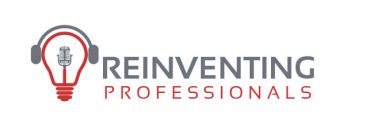For a recent Reinventing Professionals podcast, I talked with Josh Maley, the founder of Theorem, about what led him to create Theorem, and the value of aggregating legal tech.
Theorem is an online platform designed to aggregate legal technology applications for law firms and corporate legal departments. In these highlights from the interview, we discuss the platform’s genesis, how it impacts the way organizations manage their application suite — and advice for law firm and legal department leaders who are driving innovation.
Ari Kaplan: Tell us about your background and the genesis of Theorem.
Josh Maley: I started my career in institutional finance and ended up becoming a partner at a small venture fund, which is where I began my entrepreneurial path. I was charged with leading and structuring venture deals, negotiating key terms, and positioning the fund for long-term success. I noticed that our legal partners weren’t well integrated with our business. After our fund capital had been deployed, I saw a lot of opportunity in the business of law and decided to attend Wake Forest Law School, where I quickly confirmed my views on the legal industry. I had seen so many innovative business practices in the venture world, and none of it seemed to be translating at a notable pace to the legal sector.
So, in law school, I started the Legal Hackers Network and began tracking legal tech companies. I noticed that the interfaces, although not always designed very well, were getting very good at matching the actual analysis and operational processes of an attorney handling the particular legal task for which the solution was built. After graduating in 2018, I determined that legal professionals had no way to understand all the options and services available to them at the point of the pain within the workflow, and were unable to adopt new technology on a per-transaction basis. Recognizing that there’s a lot of siloed legal tech solutions, my North Star became the curation and presentation of technology to drive legal matter workflows and reduce the risk and costs of adoption. That is the genesis of Theorem.
What does Theorem do?
JM: Theorem is a platform that brings vendors, law firms and in-house legal teams together. It serves as a single portal to access an organization’s current technology stack and to identify, evaluate and purchase new, best-in-class legal technology. In addition to our app store-type function, the platform combines an integrated marketplace for legal technology and offers users the ability to manage their subscriptions with a transparent, no-code workflow engine.
The Theorem platform is built for law firms and in-house legal departments to combine every aspect of legal service delivery in one spot.
Can you give us a practical example?
JM: In Theorem, users can visualize the process of any particular routine legal matter, then drag and drop the technology they need into it. The system offers suggestions as they build and refine their process with real-time metrics on their transaction costs and the estimated time-savings associated with the tech selected for that particular matter or task checklist. They can also distribute that upgraded process across their organizations and invite cross-functional team members to collaborate.
For example, if a user is conducting a trademark search, he or she may be leveraging one tool for intake, an AI tool for clearance search, another tool for filing, another for docketing, and yet another to identify and commence an infringement action. Our technology will enable that individual to connect those tools. And, in many instances, we can even deliver full-service automation through API endpoints, where the intake form prompts the search tool, which delivers the user into the trademark application tool and then further along the process.
How does using Theorem affect the way organizations are currently managing their suite of applications?
JM: It gives them the ability to see all the available options that they have, as well as to receive new suggestions at the point at which a professional needs them.
Where is the market for similar platforms and tools headed?
JM: We live in an API economy and the future is about open platforms. Some legal technology companies are beginning to open their developer ecosystem to adapt. As the market matures, more capital will flow into it and strengthen this API ecosystem. There is also a shift from evaluation to adoption because the need to drive adoption and enhance customer success is always going to be a business imperative. We know what works, but we need to make sure the solutions are not shrink-wrapped in the garage somewhere.
What advice would you give to leaders at law firms and legal departments who are driving innovation?
JM: The rate of change outside the legal industry is far more rapid, and while the strategy for major law firms and legal departments may be unclear, they need to continue to evolve. It is better to own the experiment than to become stagnant or distracted with short-term success, so I would encourage legal innovators to be proactive.
Ari Kaplan regularly interviews leaders in the legal industry and the broader professional services community to share perspective, highlight transformative change, and introduce new technology on his Reinventing Professionals podcast. Listen to his conversation with Theorem’s Josh Maley here and follow Josh @TheoremLTS.
Illustration ©iStockPhoto.com
Subscribe to Attorney at Work
Get really good ideas every day for your law practice: Subscribe to the Daily Dispatch (it’s free). Follow us on Twitter @attnyatwork.

















